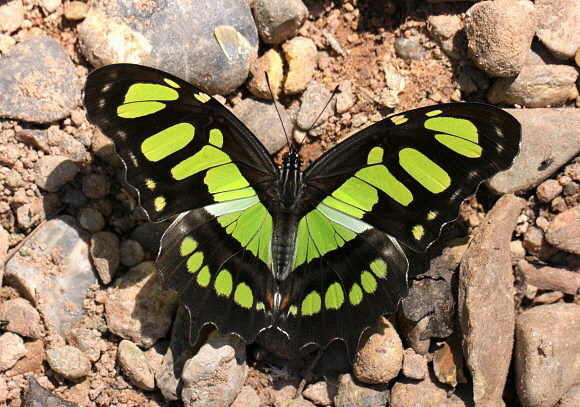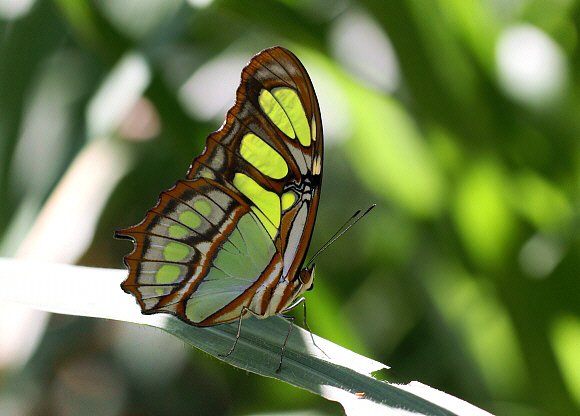
Introduction
The tribe Victoriniini includes the Asian genus Rhinopalpa, the African Kallimoides and Vanessula, and the neotropical genera Anartia, Junonia, Hypolimnas, Metamorpha, Napeocles and Siproeta. There are 3 Siproeta species – stelenes, superba and epaphus. The beautiful Malachite is distributed from Florida and Texas, south to Peru, Argentina and Bolivia. The butterflies look particularly beautiful when seen at rest, with sunshine streaming through the translucent green windows on the wings.
Some workers consider stelenes to be a Batesian mimic of the Heliconiine Philaethria dido. The two species generally occupy different habitats – dido is a rainforest canopy species whereas stelenes is found in disturbed open forest. However there are many forest edge habitats where both can be found flying together and would be encountered regularly by the same predators.
Habitats
This widespread and common species is found in many different habitats including lowland and mid-elevation rainforest, and deciduous forests, but is most commonly seen in secondary habitats, including roadsides, riverbanks, orchards and gardens. It occurs at altitudes between 0-1400m.

Lifecycle
The eggs are dark green, and laid singly on leaves of Ruellia, Justicia or Blechum, all members of the Acanthaceae. The fully grown larva is dark olive in colour, with a series of whorled spikes along the back and sides. Those on the back are reddish. The chrysalis is pale green, with the thorax and abdomen covered in minute black dots, and is suspended by the long cremaster from stems of the foodplant.

Adult behaviour
The males are usually seen in open sunlit areas along roads and riverbanks, but I have also often found them basking on low foliage in dappled sunlight along narrow forest trails. Females tend to patrol back and forth along a limited stretch of habitat, dotting their eggs about fairly randomly.
Both sexes nectar at Lantana and other flowers. Males also feed at carrion and dung, and visit orchards to feed at rotting fruit. I have often seen groups of Malachites feeding on decaying fallen mangos in Costa Rica.
On hot sunny days I often see singletons imbibing mineralised moisture from dirt tracks and stony roads in Peru and the Venezuelan Andes. If disturbed they usually fly up onto the lower branches of trees, where they are superbly camouflaged.
The butterflies go to roost in late afternoon beneath leaves. This can take place either among low vegetation along the forest edge, or on saplings in the understorey deep inside the forest.
